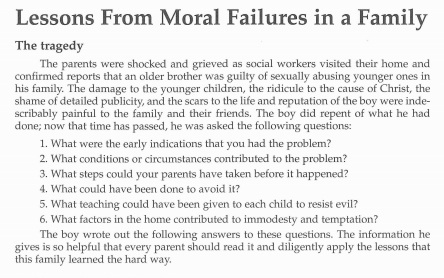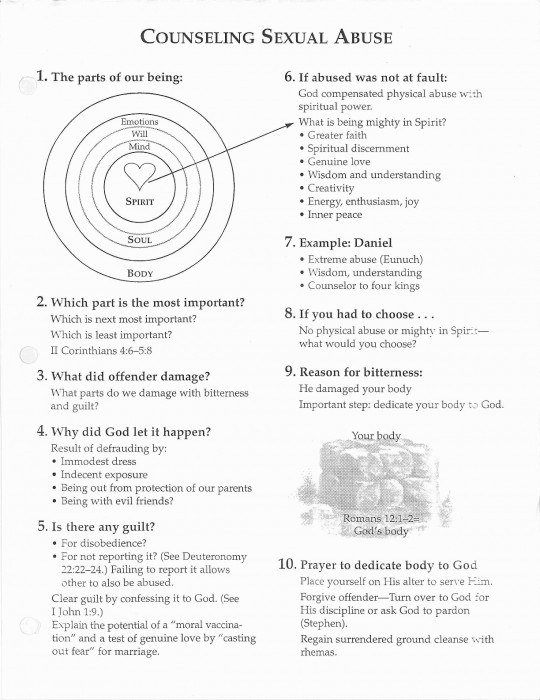More stupid shit from someone whose thinking has been completely warped and emptied-out by years upon decades of Christian fanaticism. This someone is called Michael Brown (yes there’s an irony) and he shares his stupid shit with us via the Christian Post.
I have no desire to pile on with more comments about Josh Duggar, who appears to be a very serious and committed Christian who has made no excuses for the sins of his youth and who deeply desires to make a positive impact for the Lord in the years ahead. I simply want to share some redemptive thoughts, supplementing some of the excellent statements made by others, including former governor Mike Huckabee and Southern Baptist leader Russell Moore.
It’s not about “sins.” That’s warped. It warps the conversation and the thinking away from the harm done to human beings to focus instead on putative crimes against God. Notice that Brown doesn’t even mention harm done to human beings in that opening. He doesn’t get to it after that, either – he goes right on ignoring it to talk about other things: things that are less important or illusory or both. His thinking is warped and impoverished by his religious fanaticism. That’s one of the hallmarks of religious fanaticism: it focuses on completely irrelevant and imaginary issues at the expense of real issues that affect real humans.
1. Jesus really does change people. While critics of the Duggar family want to indict them (along with other, evangelical Christians, especially those with large families) for Josh’s actions, and while many seem ready to throw Josh under the bus, the fact is that while he did sin grievously, through repentance, faith and counseling, he became a new man. Jesus really does transform sinners.
That’s not the issue. That’s not the point. It’s not all about Josh; it’s not about Josh first and everyone else later, much less Josh first and everyone else never. It’s not a morality play about Josh’s redemption. That focus is all wrong.
2. There’s no excuse for sin, so own up to it. In today’s culture, almost no one is guilty of anything. It’s someone else’s fault, someone else’s responsibility, not our own. We’re all victims, and the reason we do bad things is because someone else wronged us. Isn’t that how we think today?
I’ve even heard athletes apologize for some really heinous actions by saying, “I’m not happy with the way things happened,” rather than saying, “What I did was wrong and I have no excuses. Please forgive me. I’m seeking to get to the root of my problems and address them.”
What a vast difference between the two attitudes.
As Proverbs states, “Whoever conceals his transgressions will not prosper, but he who confesses and forsakes them will obtain mercy” (Proverbs 28:13).
Wait a minute. Josh Duggar – and his parents – did conceal his “transgressions.” They did conceal them, and by concealing them, were enabled to be tv stars and make lots of money to buy long skirts for all those daughters, and to spread the gospel of fanatical Christian patriarchy.
Michael Brown should cut the bullshit. The Duggars didn’t “own up to” anything until the secret was revealed by others. They don’t get credit for that.
I agree with him about football players weasel-wording their statements about things like punching women in the head. I’ve written about that, in Free Inquiry as well as here. He’s right about that part. But he’s not right that the Duggars are doing anything very different – or even that he is. He’s well into his piece and has yet to mention the people Josh Duggar harmed.
According to the accounts we’ve all heard, Josh confessed his sin to his parents as well as to the proper authorities, and as a family, they worked through the issues. Now, half a lifetime later (he’s 27 and is married with four children), when confronted with a police report about his past, he did not minimize his sin nor did he excuse it. He also resigned from the fine Christian organization for whom he worked, not wanting to bring any negative attention to their work.
Holy crap – what happened to “thou shalt not bear false witness”? Josh did not confess his sins crimes to the proper authorities. Nobody confessed anything to the proper authorities until after the statute of limitations had safely expired.
And “working through the issues” is beside the point. Again – still no mention of the people he harmed. Not even a spelling out of what he actually did. Brown is being at least as evasive and dishonest as those bullshitting football players.
As for resigning from the “fine” homophobic Christian organization he worked for – he wasn’t so forthright and responsible and blame-shouldering that he decided not to work for them in the first place, was he. Consider me not impressed that he resigned when his secret was blown.
When I see someone respond like this, I am filled with hope. In fact, over the years, I’ve seen that people who committed uglier sins but took full responsibility and repented did far better than those who committed less serious sins and tried to sweep them under the rug.
Great. Have a party. Good that you’re happy. Meanwhile, the girls Josh Duggar sexually molested…oh well, who cares about them. They must be sluts.
4. Josh can be an ambassador on behalf of the abused, even helping the abusers as well. While it can feel like your life is over when your past, largely private sins become public (how many of us would like for that to happen?), the fact is that Josh’s future can be bright in the Lord.
He can be an ambassador on behalf of the abused? Wtf? How? Why? Using what diplomatic credentials?
Why the hell would anyone who has been sexually abused want Josh Duggar as an “ambassador”? He has yet to show the slightest awareness that sexual abuse is bad for the abused.
He can call on others who are sinning to come clean and get help, using his own example redemptively. And he can encourage those who have been abused to realize that they are not guilty and should not feel shame, also encouraging churches to embrace those who come for help rather than making them feel as if there is something wrong with them.
No he can’t. He and his family believe the abused are guilty, so no, he’s the last person who can do any of that.
There are eight more paragraphs after that, in which he still does not mention the people Josh Duggar sexually molested. He does not mention them once in the whole article.
(This is a syndicated post. Read the original at FreeThoughtBlogs.)







